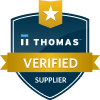A Building Manager’s Quick Guide to Indoor Air Quality

Do you ever think about breathing?
Probably not…until you have a stuffy nose, or allergies, or that tight feeling in the back of your throat, or you’re trying not to cough, or not to breathe in that weird smell from who knows where.
Only then do you remember that breathing’s kind of a big deal.
For building managers, maintaining IAQ (indoor air quality) is breathing written on a large scale: few occupants ever notice that they depend on pure, healthy air until, one day, that air’s not so pure anymore.
The culprit could be fumes, cleaning chemicals, mold, mildew, dust, leftover construction particles, or any combination of the above. Whatever the pollutant, it leads to work-affecting health issues; in fact, air quality-related ailments lead to sick and tired employees, increased absenteeism, and up to 6% lower productivity.
That’s why maintaining high-quality indoor air is so important for building managers: both your occupants’ health and the business’s bottom line depend on it.
With that in mind, here are a few building air quality tips to help your occupants breathe comfortably and healthfully:
An Ounce of Prevention > a Pound of Cure
As with so many things, it’s always cheaper to prevent an air quality problem than to fix it. In this case, an effective HVAC inspection and maintenance plan will stop many air quality issues before they start.
- Review the basics of effective HVAC maintenance; if you’re in SoCal and looking for a trustworthy local HVAC company, we’re happy to recommend one local to you. Their expertise will help you plan a regular schedule to keep your A/C and heating units clean, high-performing, and free of common pollutants like mold and mildew.
- Inspect the entirety of your building and its air ducts for other possible pollutant sources. Note especially any signs of moisture, even currently dry areas that show signs of water damage. (Iif water’s been there once, it could return again.) Since mold and mildew thrive in damp places, getting rid of them requires fixing all these water-prone areas.
- Inspect what’s inside your building: furnishings and office equipment can leach pollutants too. For example, even often-vacuumed carpets and curtains can be a haven for dust, particles, spores, and other contaminants. Deep-clean both regularly, even if they look fresh and innocent.
Speaking of cleaning, of course you should have all areas cleaned regularly to reduce indoor air pollution.
BUT:
Before you go on a cleaning spree, take a look at your team’s cleaning supplies. Many common cleaners contain irritating chemicals that could cause fatigue, headaches, and allergic reactions in your building’s occupants—just what you’re trying to avoid!
Now that eco-friendly, reasonably priced, and effective cleaners are easily available, use those instead. Your tenants will thank you.
Finally, make sure that emission-producing processes (which can include large copy machines) are kept away from air ducts.
- Inspect what’s outside of your building, especially near air ducts. Since your HVAC sucks in air through them, your occupants will breathe whatever’s around the duct too. (Regularly replacing your high-performing HVAC filters helps minimize the amount of pollutants, but even the best filters can’t get everything.)
So note if any of your intake air ducts are near a pollutant source such as a
- parking lot
- delivery/loading dock
- dumpster
- garage
- construction site
Talk to your HVAC team about ways to minimize pollution or (if necessary) relocate the air duct to a cleaner place.
And as long as you’re outdoors, check out the drains too; you don’t want any water seeping in through them.
- Measure the airflow, temperature, and humidity of each space in your building. This will let you know if you need to pump more or less air in, change the thermostat settings, or even rearrange furniture for optimal air quality in each room.
Congratulations; you’ve finished your air quality inspection! Repeat it regularly, especially the HVAC inspections and maintenance, and you’ll stop most major air quality problems in their tracks.
When Issues (and/or Strange Smells) Arise, Respond Then and There
Of course, not every air quality issue can be prevented. Life happens, even to buildings. But if you’ve got a strong maintenance program in place, resolving these minor flubs should be quite manageable — as long as you do so quickly. Whether it’s insects, rodents, an unpleasant odor, a leak, or an allergic reaction someone gets in a certain space, act promptly to:
- Identify the source
- Remove or isolate the source (for example, if someone has a bad reaction to a cleaning chemical your building just can’t do without, change the cleaning agent)
- Dilute the remaining pollutant via ventilation
- Filter in fresh air to the affected area
Want More? They’ve Written the Book on It!
These tips cover the basics, but the full EPA building manager’s guide to indoor air quality is free online—all 228 pages of it. We highly recommend checking over it; ensuring clean air for your occupants is worth it!
And don’t forget the best way to keep air clean in an emergency is to have your back up generator ready for use. Have annual or semi-annual maintenance done to ensure everything is in good working condition. Call us today for a quote! Or request a service quote online.


